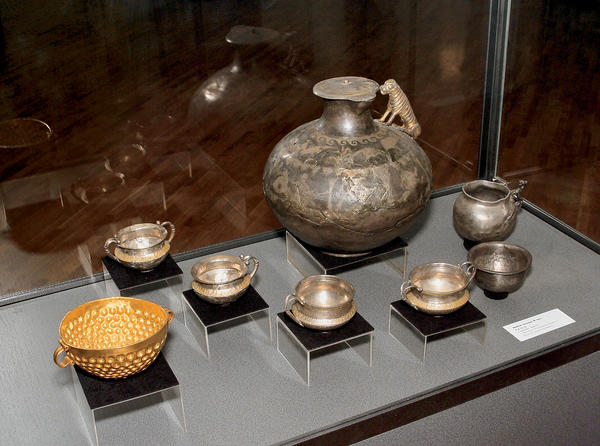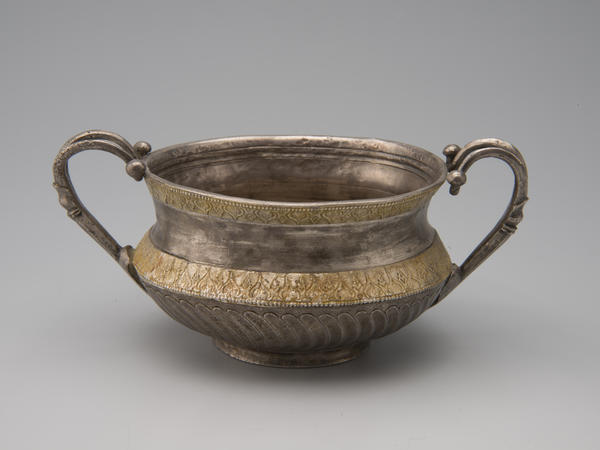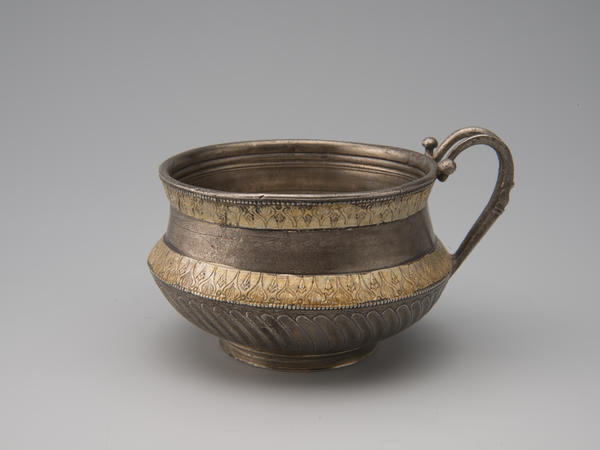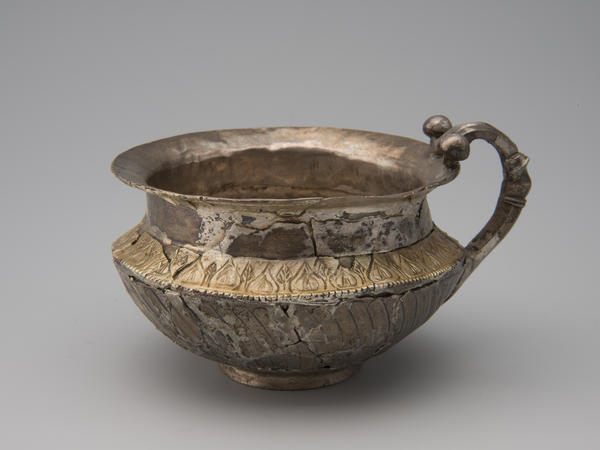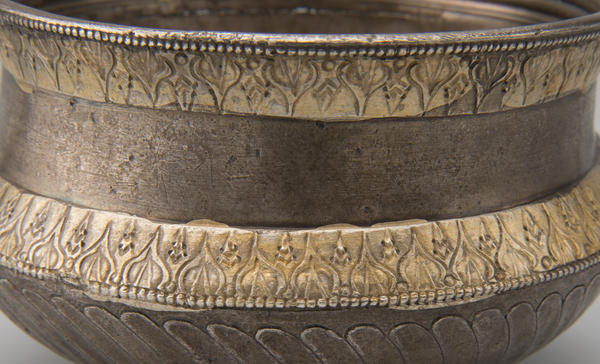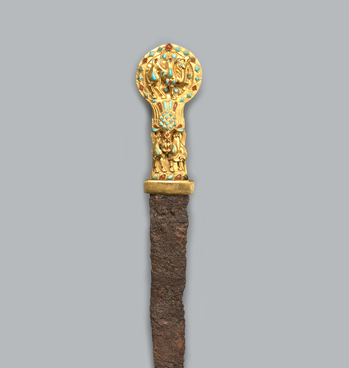Kantharoi are part of a dinnerware set that archaeologists found in 1982 in the Rostov region near the village of Vysochino. Here, away from the grave, two hiding spots were made. The funeral gifts — tableware made of precious metals — were placed in them, and then they were covered in with earth from the grave. That’s what saved the ancient artwork: it was easier for burglars to get into the tomb itself in the middle of the earth fill than to find small hiding spots aside. The construction of the grave and the objects found in the hiding spots allow us to attribute the burial to the second half of the 1st century A.D.
Kantharoi
Creation period
1st century A.D.
Dimensions
Height: 6.3; 6.8; 6.2; 6.5 cm. Width: 10.5; 11.1; 12.1; 13.2 cm
Technique
silver, draw-forming, embossing, raising, lathe machine, casting, soldering, gilding
Collection
Exhibition
9
Open in app#4
#8
Set of tableware from the burial mound 28 of Vysochino-VII, 1982
#5
In one of the hiding places, four silver kantharoi — wine drinking vessels — were found. All of them are of the same shape, only slightly different in size and details of the ornament. The vessels are made of thin sheets of silver, cast handles are made in the form of stylized plant shoots: lower ones are leaf-shaped, upper ones are in the form of buds soldered to the edge of the mouth of the vessel. Kantharoi of this type are known among the Sarmatian artifacts of the Lower Don.
#9
Silver kantharos
#10
The kantharoi were made much earlier than the burial took place. Many details bring these vessels closer to the typical cups for drinking of the previous era of late Hellenism, i.e. the 2nd — beginning of the 1st century B.C. This is evidenced by the shape of the handles and the body, the decor with wavy cannelures (canals) and cymatium belts — ornaments — as well as cladding. It is a gilding technique in which heated thin plates of precious metal were placed on the base material.
Silver kantharos. Detail
#7
That the kantharoi were made long before the burial took place can also be deduced from their different condition. Two of the vessels had one handle each. It’s hard to imagine that nomads could have kept their luxury goods for so long. Most likely, tableware made of precious metals was put into the grave with its master to serve him in the next world. Perhaps it wasn’t the newest things that were given to the barbarians as gifts.
Kantharoi were part of the tableware set. Precious metal tableware sets consist of same-type specially selected items. They were given in payment for participating in fights or as diplomatic presents.
Kantharoi were part of the tableware set. Precious metal tableware sets consist of same-type specially selected items. They were given in payment for participating in fights or as diplomatic presents.
#11
Ministry of Culture of the Russian Federation
read morehide
00:00
00:00
1x
Kantharoi
Creation period
1st century A.D.
Dimensions
Height: 6.3; 6.8; 6.2; 6.5 cm. Width: 10.5; 11.1; 12.1; 13.2 cm
Technique
silver, draw-forming, embossing, raising, lathe machine, casting, soldering, gilding
Collection
Exhibition
9
Open in app
Share


